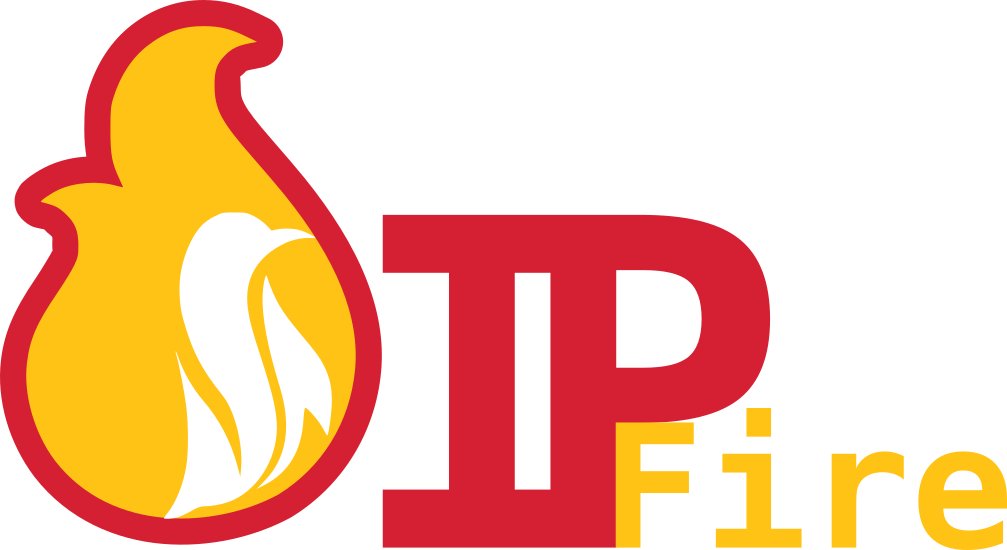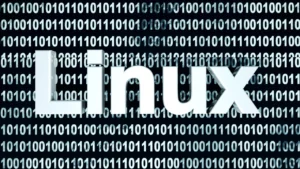
IPFire’s 2.29 latest Core Update 190 represents the most important advance in network security with post-quantum cryptography for SSH key exchanges. The implementation of advanced methods like Streamlined NTRU Prime sntrup761 and X25519 with SHA-512 sets new standards for encryption security. This detailed update readies our systems for the future of wireless connectivity. The built-in Wi-Fi 7 support features come with improved Neighborhood Scan capabilities that automatically optimize channels.
The IPFire firewall platform runs on Linux kernel 6.6.63 and delivers the latest security patches with better stability. Users now have individual control over IPsec traffic scanning. The new SYN Flood Protection feature makes firewall management more flexible than ever before. These updates create a strong foundation for enhanced network protection.
What is IPFire?
IPFire provides a hardened Linux-based firewall operating system that gives you complete network security through stateful packet inspection. Our system combines powerful security features with a user-friendly web-based management interface that’s available for many deployment scenarios. For more details, check out our post on IPFire
Core Firewall Functionality
The firewall uses advanced security mechanisms with these main capabilities:
- Stateful packet inspection with deep packet analysis
- Intrusion Prevention System (IPS) for threat detection
- Quality of Service management to optimize bandwidth
- Web proxy with content filtering capabilities
- DNSSEC-enabled DNS proxy that prevents spoofing
The system uses a color-coded network segmentation system to improve security:
Network Type Color Code Purpose LAN Green Normal client connections Internet Red External connectivity DMZ Orange Optional demilitarized zone Wireless Blue Optional wireless network Open Source Security Benefits
Our steadfast dedication to open source principles gives you full transparency in security implementation. Security researchers and community experts review every line of code, which helps find and fix vulnerabilities quickly. You can verify the code yourself or hire experts to audit security details because IPFire is open source.
Target User Base
IPFire works well in a variety of environments, from enterprise-level deployments to home networks. You’ll find our system running successfully in:
- Data centers that handle tens of gigabits per second
- Businesses with hundreds of employees
- Industrial applications as IoT gateways
- Home office environments
The software stands out especially when you have demanding networks. It offers features like hardware failover for high availability and complete network address translation capabilities. We keep the system lightweight and easy to implement while maintaining professional-grade security. This makes it perfect for organizations that want reliable security without complexity.
Setting Up IPFire with New Features
The latest installation process brings major improvements that boost system reliability and performance. We updated the filesystem configuration to enable ext4 journaling automatically on all new installations. This replaces our previous conditional activation approach.
Installation Process Changes
The program data needs at least 2GB storage space. We recommend 4GB to handle log files and addon packages comfortably. The installer now supports drives larger than 2TB through GPT (Great Partition Table) implementation. This ensures compatibility with modern storage solutions.
UEFI and Serial Console Options
We expanded installation options for UEFI-enabled systems to give you more flexibility. A dedicated serial console installation choice makes remote setup easier. Users can configure serial console settings with these specifications:
- Baud rate: 115200
- Data bits: 8
- Stop bits: 1
- No parity or flow control
Original Configuration Steps
Your IPFire foundation starts with simple system configurations. The setup has:
Configuration Step Purpose Keyboard Layout Regional settings customization Timezone Selection System time synchronization Hostname Setup Network identification Domain Configuration Network integration Root/Admin Passwords Security access control The system supports both x86_64 and ARM64 architectures for best performance. You need a minimum 1 GHz processor speed and at least 1GB of RAM for simple operations. Memory requirements go up when you use features like:
- Web proxy and URL filtering
- Intrusion Detection/Prevention System
- System upgrades
The installation media supports IDE, SATA, and SCSI drives, along with most hardware RAID controllers. You can complete the process in 15 minutes, which allows quick deployment while maintaining reliable security standards.
Essential IPFire Addons Guide
IPFire’s core firewall capabilities now come with a resilient infrastructure of add-ons through Pakfire, our built-in package management system. These add-ons boost IPFire’s functionality in wireless networking, system monitoring, and network management.
Wireless Support Package
The wireless support package has automatic channel optimization and better Neighborhood Scan capabilities. We focused on WiFi 7 implementation to improve wireless connection stability. The package features:
- Management Frame Protection for better security
- WPA3 support with Simultaneous Authentication of Equals
- Automatic channel selection for optimal performance
Network Management Tools
A detailed suite of network management tools helps optimize your IPFire deployment. Here’s how our network utilities stack up:
Tool Main Function Key Benefit Iftop Live bandwidth monitoring Live network usage analysis IPtraf-ng Console-based statistics Detailed protocol breakdown Nmap Network/port scanning Security assessment Speedtest-cli Bandwidth testing Internet connection verification Monitoring and Debugging Features
Our monitoring capabilities go beyond simple network oversight. We’ve integrated system monitoring tools of all sizes to track system health completely. The monitoring suite supports Zabbix Agent and stays compatible with other monitoring platforms.
UPS monitoring through Network UPS Tools (NUT) provides advanced system protection. The system supports multiple monitoring setups:
- Direct local connections via USB or Serial
- Network-based monitoring for distributed setups
- Email status notifications for critical events
These monitoring tools give live insights into system performance and track CPU usage, disk I/O, and network statistics. Your IPFire installation stays stable and secure while you get detailed visibility into system operations.
Network Interface Improvements
We have boosted our network interface management to give more flexible and reliable connectivity options. Our standard IPFire installation now supports up to four distinct security zones: RED, GREEN, BLUE, and ORANGE.
RED Interface Configuration
Our RED interface configuration has been optimized to work with ISP requirements of all types. The setup process has:
Connection Type Configuration Options Use Case DHCP/IPoE Dynamic IP Assignment Fiber/Cable Connections Static IP Manual Configuration Business/Enterprise PPP Modes Authentication Support DSL Services Static IP configurations need three vital parameters: IP address, network mask, and gateway address. This setup ensures proper routing and network segmentation to boost security.
DHCP Client Optimization
Our DHCP client daemon (dhcpcd) now handles network configurations better. The system has:
- Persistent interface configuration retention
- IPv4-focused optimization for stability
- 60-second timeout parameters for faster recovery
Our DHCP client’s implementation features automatic lease renewal and reliable error handling capabilities. The system tries to rebind and acquire new leases when connections drop.
DNS and Bridge Updates
Our DNS update system has been redesigned from scratch to boost local network name resolution. The bridge now listens for DHCP server events instead of analyzing leases, which improves scalability and responsiveness.
Advanced deployments now support Spanning Tree Protocol (STP) in bridge configurations. This feature detects and prevents network loops to ensure stable operation in complex network environments.
The DNS proxy service combines smoothly with our DHCP server and enables automatic hostname resolution for devices on the local network. This integration supports:
- Dynamic DNS updates for DHCP clients
- Automatic hostname resolution
- Improved scalability for large networks
- Better network device management
Practical Security Implementation
We focused on building a stronger security infrastructure and implemented advanced cryptographic features in our latest update. Our steadfast dedication to future-proof security starts with post-quantum cryptography for SSH key exchanges. The system uses Streamlined NTRU Prime sntrup761 and X25519 with SHA-512.
Encryption Setup Guide
Our encryption protocols now provide multiple layers of protection. Our current encryption framework supports:
Protocol Key Length Security Level AES-GCM 256/192/128-bit High Priority CAMELLIA 256/192/128-bit High Priority ChaCha20-Poly1305 256-bit Recommended We recommend AES with GCM mode because it delivers optimal performance with throughput reaching up to 10 Gbit/s on modern processors. This configuration with hardware acceleration will give a perfect balance of speed and security to your network operations.
Access Point Security Best Practices
Our system differs from traditional setups with its resilient wireless security features. The WPA3 implementation now has:
- Simultaneous Authentication of Equals (SAE) to boost key exchange
- Mandatory CCMP encryption protocol
- Forward-secrecy protection against future attacks
- Management Frame Protection (802.11w) for complete security
Security requirements keep evolving, so we substantially improved our wireless access point configurations. The system requires country code settings to enable 5GHz band operations. This prevents unauthorized frequency usage and optimizes channel selection.
Monitoring Tool Integration
Our monitoring capabilities go beyond simple oversight. We added several specialized tools:
- Network Analysis Tools:
- pmacct for client-level data accounting
- Support for GNUplot and MRTG integration
- Live traffic monitoring capabilities
- System Monitoring Features:
- Automated maintenance and repair procedures
- Process management and oversight
- File system integrity checking
- Resource usage monitoring
Your security management will benefit from these simple configurations:
- Configure public key-based authentication for SSH access
- Enable remote logging to a separate secure server
- Implement URL filtering for malware protection
- Activate intrusion prevention system with custom rules
The monitoring system works with third-party tools through our improved API framework. Administrators can maintain complete security oversight and exploit their existing infrastructure investments.
We implemented automatic key rotation protocols and improved our firewall rules with SYN Flood Protection. These improvements and our Location Block feature cut down incoming malicious traffic substantially. The system adjusts security parameters based on threat intelligence and provides dynamic protection against emerging threats.
Conclusion
IPFire Core Update 190 brings major improvements in several areas. We’ve implemented post-quantum cryptography through Streamlined NTRU Prime sntrup761 as a life-blood feature. The platform is ready for Wi-Fi 7 technology. Users now have better security and network management tools at their disposal.
Security stands at the forefront with our all-encompassing approach. The platform combines advanced monitoring tools with flexible network interface setups to provide resilient protection against new threats. The open-source foundation makes IPFire reliable as community members contribute improvements. This makes it perfect for home offices and enterprises alike.
The improved installation process now supports UEFI and serial console options. This makes setup quick and easy on hardware of all types. Network administrators can manage their systems efficiently with our color-coded segmentation system and powerful add-ons.
IPFire combines state-of-the-art security features with easy-to-use management tools to create a powerful yet simple firewall solution. Regular updates protect users from new cyber threats while the network runs smoothly.









